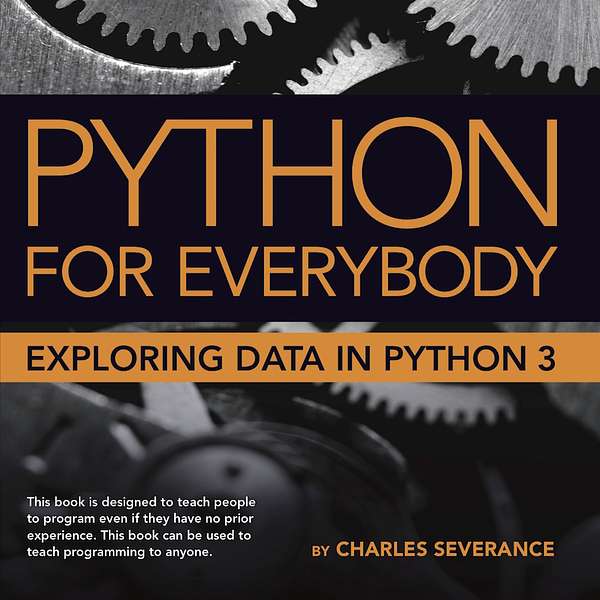
Python for Everybody (py4e.com)
These are the lectures to supplement the textbook 'Python for Everybody: Exploring Information' and its associated web site py4e.com
Episodes
86 episodes
1.1 Why Program
Explore the nature of programming and how programming a computer is different than using a computer.
•
12:30

1.2 Hardware Architecture
In this lecture we learn abut how the computer processes and stores programs. We learn about the CPU, Memory, Storage and Input / Output devices are brought together to write a program.
•
12:15

1.3 Python as a Language
We look at how writing programs is just another form of communication. Instead of communicating with another person, we are communicating our ideas to a computer.
•
7:48

1.4 What do we Say to Python?
We look at the basics of the Python language and how we write code in Python to communicate sequential steps, conditional steps and repeated steps.
•
12:45

2.1 Building Blocks of Python
We look at Python's reserved words, how we name and use variables, why we choose meaningful (mnemonic) variable names and how assignment statements function.
•
9:41

2.2 Expressions
We look at how we use various numerical and string operations to compute new information and store the new values in variables.
•
19:53

3.1 If-Then-Else
The most basic conditional structure is the if statement where we either execute or skip a segment of code based on the results of a logical expression (i.e. asking a question).
•
11:06

3.2 More Conditional Statements
In this video we look at multi-branch if statements and the try-except concept where we can indicate a group of statements to be executed if something goes wrong with a block of statements.
•
13:51

4.1 Using Pre-Defined Functions
We look at how code flows into and out of functions as well has how we pass information into functions and get results returned to us.
•
10:29

4.2 Building our Own Functions
We look at how to build our own functions using parameters and arguments as well as how we return results to the code that is calling our functions.
•
12:35

5.1 The Basics of Loops
We look at how we construct a loop so that it runs as long as we want it to run. We learn about iteration variables and exiting loops with the 'break' and 'continue' statements.
•
9:58

5.2 Definite Loops
We learn how to use the 'for' statement in Python to loop through a set of data.
•
6:51

5.3 Patterns for Making Loops
Loops have a beginning, middle, and end. We look ant how we construct a loop to look at a list of items one at a time so we can compute an overall maximum, minimum or average.
•
8:43

5.4 Loop Techniques
We continue to look at how to construct loops including how to do something special the first time through the loop. We introduce the idea of 'None' which is a way to indicate that a variable is currently empty.
•
18:47

6.1 Storing Text Data in Strings
We learn how to create string variables and extract portions of the data as well as write simple loops to read through the characters in a string.
•
10:42
